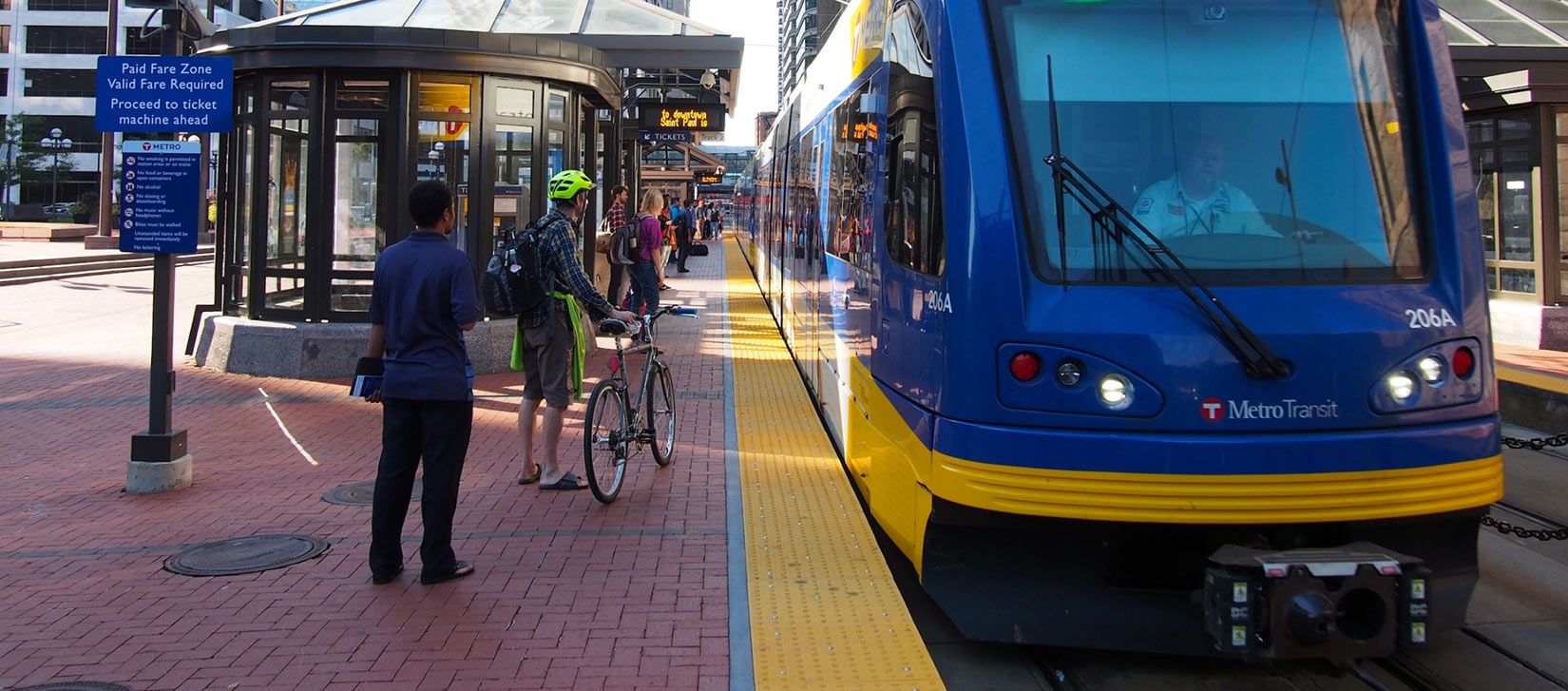Why do we prioritize mobility?
We are committed to making transportation options safer, more reliable, more convenient and with fewer climate impacts so that we can more quickly reach our citywide goals.
From the onset of the bicycle to the automobile, planes and drones, transportation has always been impacted by technology. Rapid changes to transportation are even more visible now with the introduction of bike-sharing, ride-hailing, scooter sharing, and car sharing options, all within the last 15 years. Predicting what might be next is challenging, but we know that if we stay committed to our goals, we can both anticipate and respond to change while harnessing technology to support the transportation future we want.
The City of Minneapolis has over 1,000 miles of streets and parkways that serve a variety of different types of mobility needs and transportation options. There are trips in and out of the city, between neighborhoods, or that serve as the last mile to and from transit stops. In fact, there are over 200 transit routes spread throughout the city that carry millions of passengers every year. We also have a bike share system that has seen 400% growth in annual ridership since it launched in 2010, with about 460,000 trips in 2017. 10
From the time that our regional bike share system launched, other shared mobility options such as ride-hail, electric scooters and dockless bike share have emerged. In 2018, two scooter share companies were permitted in Minneapolis, with over 225,000 trips reported during the 2018 season. In 2019, the City expanded the number of permitted scooter share companies to three, with over 1 million trips reported during the 2019 season.
In recent years, there have also been efforts to accommodate electric vehicles. As these mobility options continue to emerge, the City will be evaluating these options to ensure they are equitably and safely operated, work to support our mode share goals, and that the City’s infrastructure can support the move from fossil fuel to renewable energy options.
Nice Ride trips (system-wide) and scooter trips in Minneapolis

Source: Nice Ride Minnesota (2019) and Minneapolis scooter pilot program data (2019)
The City of Minneapolis has over 1,000 miles of streets and parkways that serve a variety of different types of mobility needs and transportation options.
ALIGNS WITH THE FOLLOWING MINNEAPOLIS 2040 GOALS:
Affordable and accessible housing High-quality physical environment Complete neighborhoods

 MOBILITY
MOBILITY